Abstract
The fluorescent stain Hoechst 33342, when injected i.v. into mice, has an LD50 of 300 micrograms g-1. The stain exits rapidly from the blood, with a half-life of 110 sec following an injection of 10 micrograms g-1, but remains bound within target cells, redistributing with a half-life longer than 2 h. This results in a gradient of drug binding outward from capillaries which can be used to estimate regional perfusion via fluorescence microscopy of frozen tissue sections. For tumour tissues that can be dispersed into single cell suspensions, intracellular Hoeschst 33342 can be quantified by flow cytometry, and cell populations can be selected on the basis of their fluorescence (distance from the vasculature) using a fluorescence-activated cell sorter. Our results in tumours and in spheroids indicate that the rate of stain uptake by different cell subpopulations in situ is much more dependent on stain delivery than on selective uptake. Retention of the stain in spheroids is sufficiently stable to allow cell sorting several hours post-injection. Hoechst 33342 thus appears to have considerable potential as an agent for quantifying tissue perfusion, and for allowing selection of tumour cell subpopulations to assess response to radiation and drugs.
Full text
PDF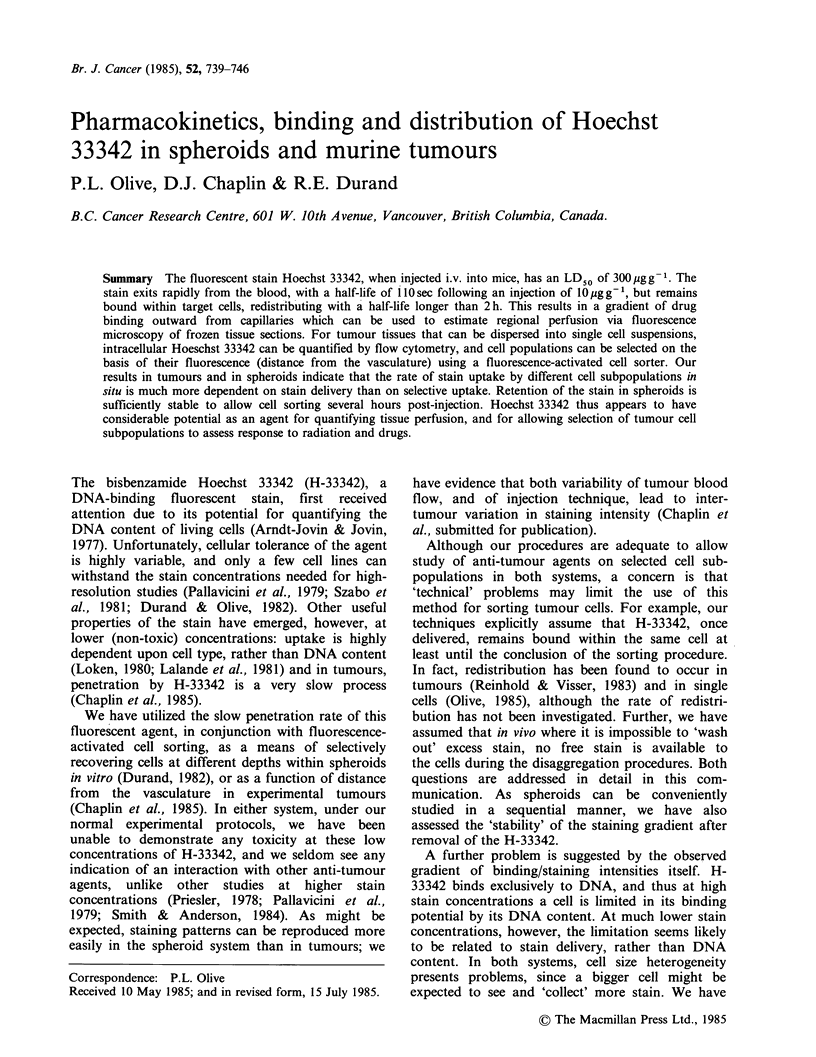
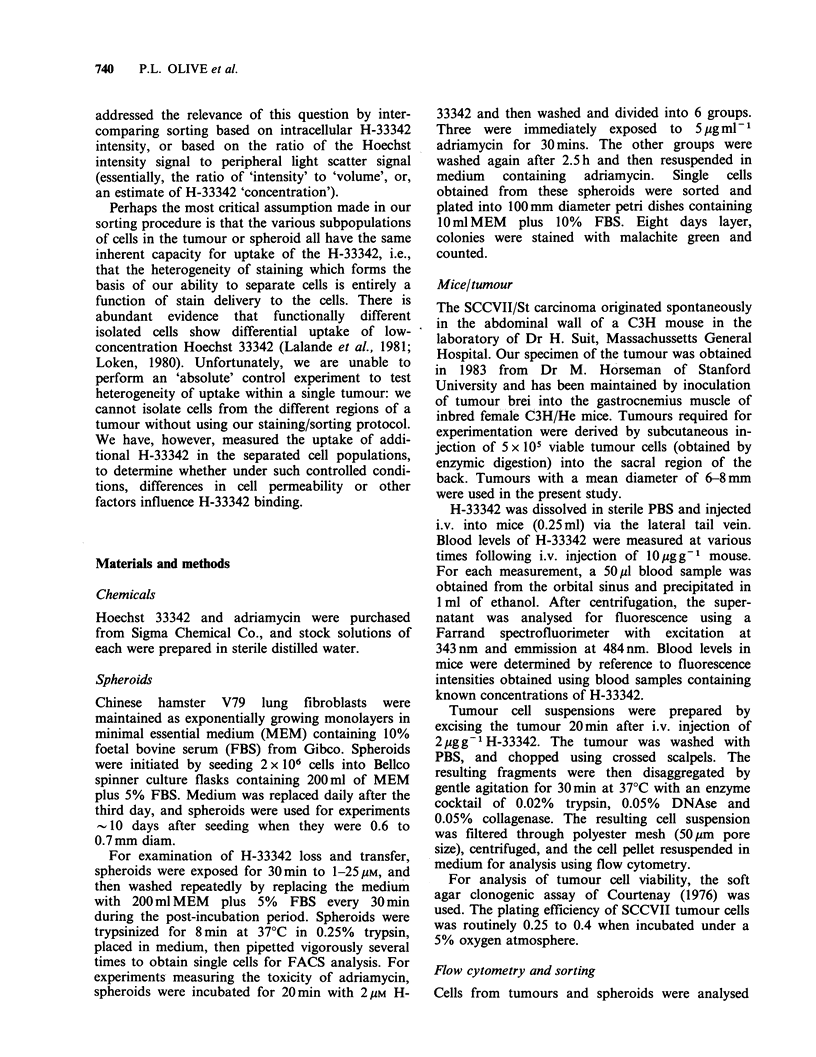
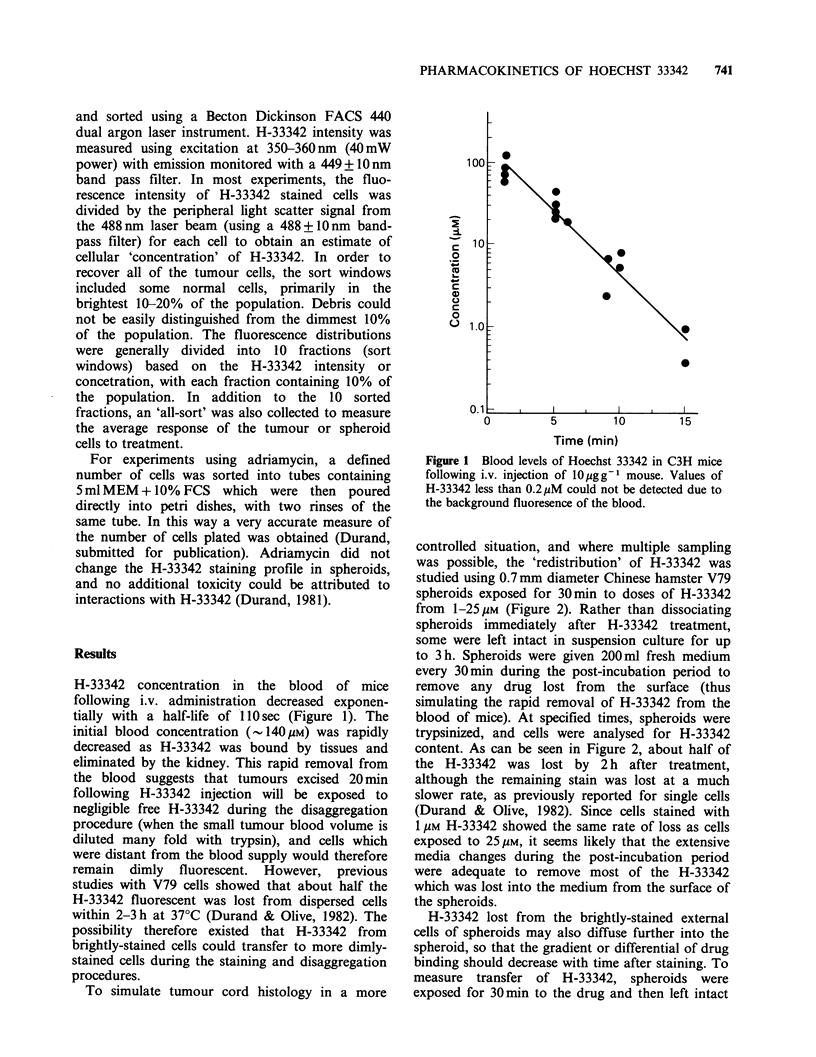
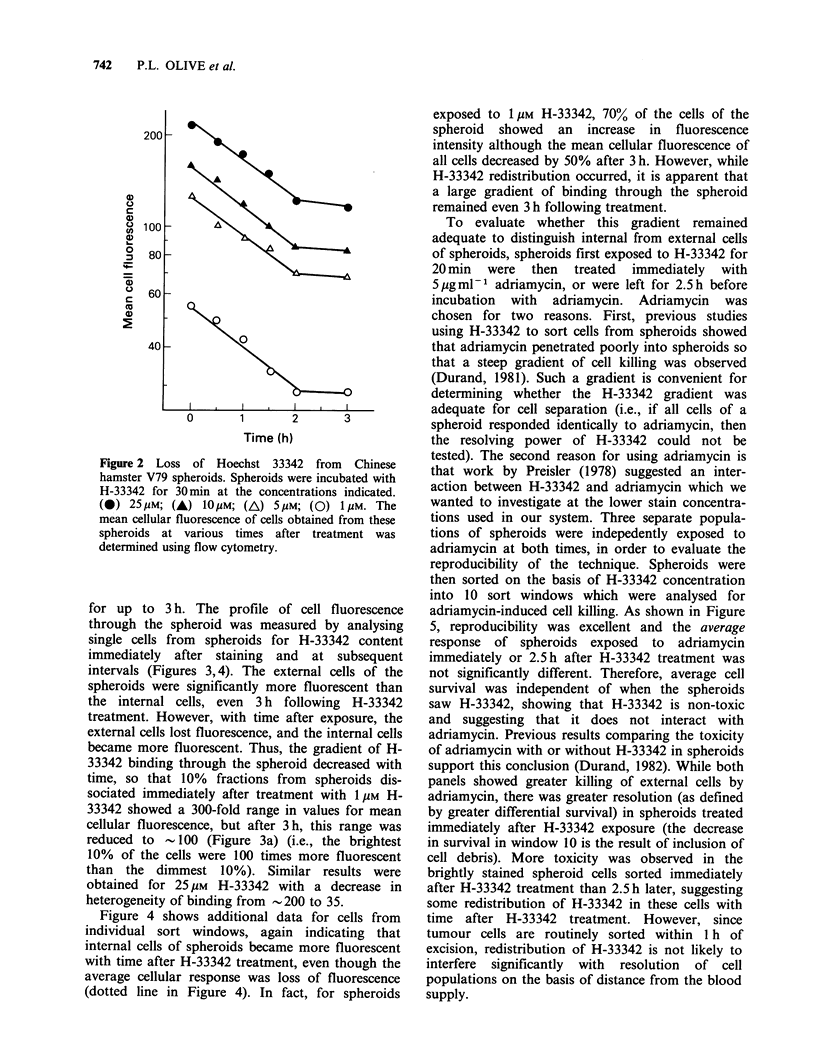
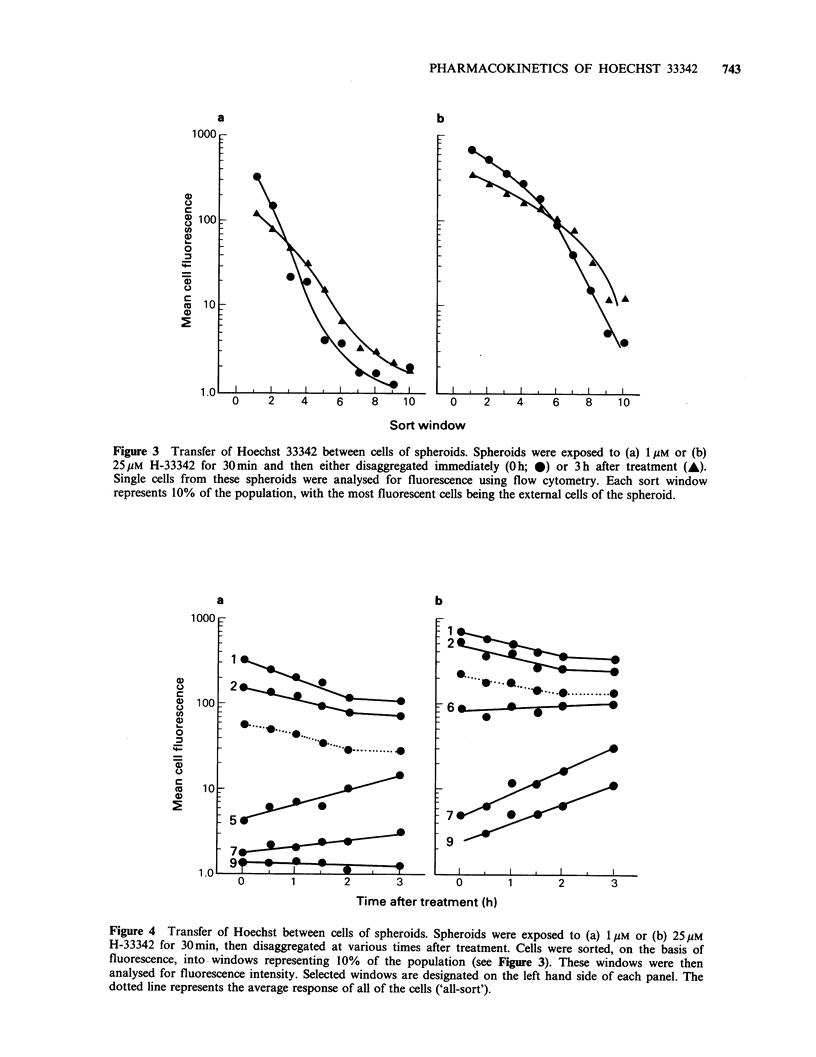

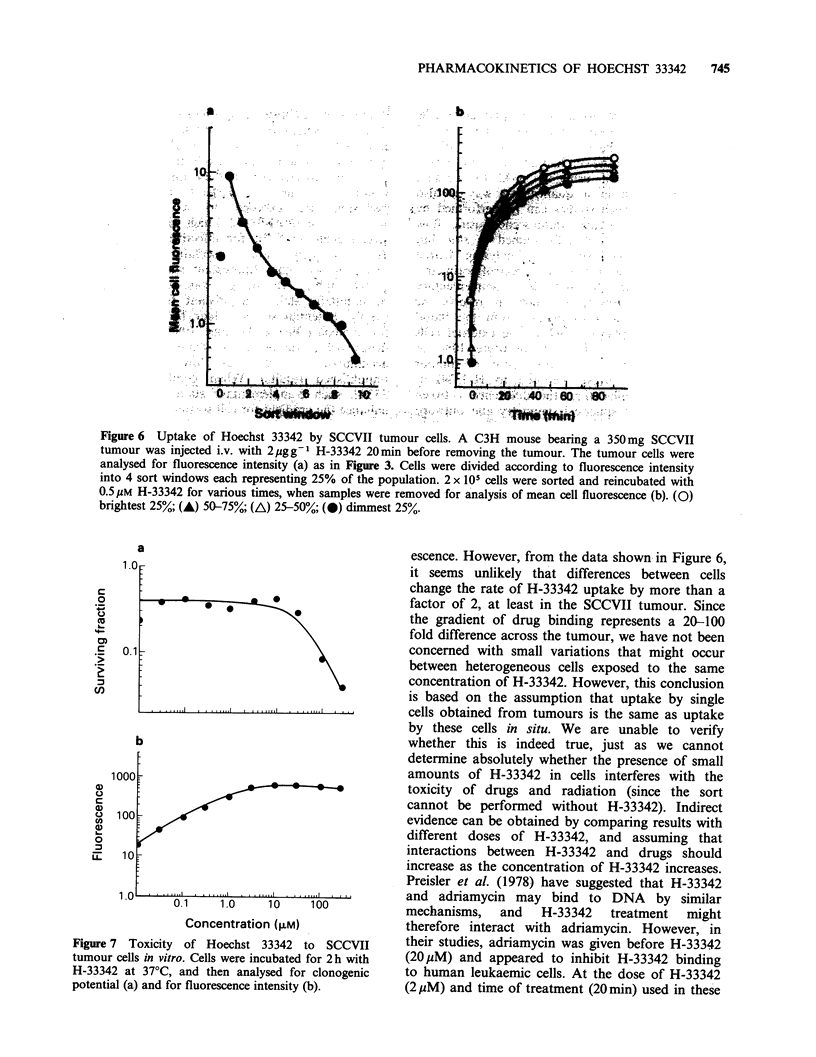

Selected References
These references are in PubMed. This may not be the complete list of references from this article.
- Arndt-Jovin D. J., Jovin T. M. Analysis and sorting of living cells according to deoxyribonucleic acid content. J Histochem Cytochem. 1977 Jul;25(7):585–589. doi: 10.1177/25.7.70450. [DOI] [PubMed] [Google Scholar]
- Chaplin D. J., Durand R. E., Olive P. L. Cell selection from a murine tumour using the fluorescent probe Hoechst 33342. Br J Cancer. 1985 Apr;51(4):569–572. doi: 10.1038/bjc.1985.79. [DOI] [PMC free article] [PubMed] [Google Scholar]
- Courtenay V. D. A soft agar colony assay for Lewis lung tumour and B16 melanoma taken directly from the mouse. Br J Cancer. 1976 Jul;34(1):39–45. doi: 10.1038/bjc.1976.119. [DOI] [PMC free article] [PubMed] [Google Scholar]
- Durand R. E. Flow cytometry studies of intracellular adriamycin in multicell spheroids in vitro. Cancer Res. 1981 Sep;41(9 Pt 1):3495–3498. [PubMed] [Google Scholar]
- Durand R. E., Olive P. L. Cytotoxicity, Mutagenicity and DNA damage by Hoechst 33342. J Histochem Cytochem. 1982 Feb;30(2):111–116. doi: 10.1177/30.2.7061816. [DOI] [PubMed] [Google Scholar]
- Durand R. E., Olive P. L. Flow cytometry studies of intracellular adriamycin in single cells in vitro. Cancer Res. 1981 Sep;41(9 Pt 1):3489–3494. [PubMed] [Google Scholar]
- Durand R. E. Use of Hoechst 33342 for cell selection from multicell systems. J Histochem Cytochem. 1982 Feb;30(2):117–122. doi: 10.1177/30.2.6174559. [DOI] [PubMed] [Google Scholar]
- Lalande M. E., Ling V., Miller R. G. Hoechst 33342 dye uptake as a probe of membrane permeability changes in mammalian cells. Proc Natl Acad Sci U S A. 1981 Jan;78(1):363–367. doi: 10.1073/pnas.78.1.363. [DOI] [PMC free article] [PubMed] [Google Scholar]
- Olive P. L., Durand R. E. Fluorescent nitroheterocycles for identifying hypoxic cells. Cancer Res. 1983 Jul;43(7):3276–3280. [PubMed] [Google Scholar]
- Pallavicini M. G., Lalande M. E., Miller R. G., Hill R. P. Cell cycle distribution of chronically hypoxic cells and determination of the clonogenic potential of cells accumulated in G2 + M phases after irradiation of a solid tumor in vivo. Cancer Res. 1979 Jun;39(6 Pt 1):1891–1897. [PubMed] [Google Scholar]
- Reinhold H. S., Visser J. W. In vivo fluorescence of endothelial cell nuclei stained with the dye Bis-benzamide H 33342. Int J Microcirc Clin Exp. 1983;2(2):143–146. [PubMed] [Google Scholar]
- Smith P. J., Anderson C. O. Modification of the radiation sensitivity of human tumour cells by a bis-benzimidazole derivative. Int J Radiat Biol Relat Stud Phys Chem Med. 1984 Oct;46(4):331–344. doi: 10.1080/09553008414551511. [DOI] [PubMed] [Google Scholar]
- Szabó G., Jr, Kiss A., Damjanovich S. Flow cytometric analysis of the uptake of Hoechst 33342 dye by human lymphocytes. Cytometry. 1981 Jul;2(1):20–23. doi: 10.1002/cyto.990020104. [DOI] [PubMed] [Google Scholar]


